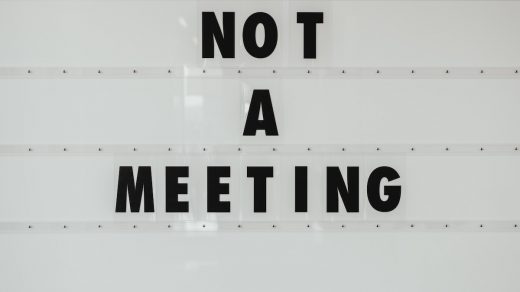Have you ever watched a press release meander through approvals for so long that by the time everyone has signed off, the document is no longer relevant? You’re not alone. All advocacy organizations have some kind of approval process whether formal or informal for policy papers, press releases, budget expenditures, email blasts, events and so on. Poor processes can result in decision paralysis, loss of trust, and even serious mistakes. Designed well, however, and your organization can ensure high quality external materials, team buy-in, and timely responses to fast moving issues. Getting it right requires clarity, balancing trade-offs, and aligning with your organizational strategy.
Clarity is Step One
Lack of clarity on who is supposed to sign-off on what causes all kinds of problems. Team members may not know who’s supposed to look at a particular product and either check-in with too many people unnecessarily slowing things down or conversely not checking in enough, making decisions without sufficient input from others. Frequently different perspectives on who should have looked at something saps trust. A staff member may feel justified in approving, say, a particular budget item and thought he was doing the right thing while his boss assumed she was supposed to provide the final OK. She may feel she can no longer rely on him going forward thereby engaging in seemingly small details of his work. He perceives the pattern, viewing it as constant meddling and a lack of support. As trust falls on both sides, productivity suffers.
Getting clear on who is supposed to sign off on which product helps avoid this scenario. In small organizations with few releases even a verbal agreement can be enough, though I strongly recommend writing these things down for common outputs in larger organizations. I like using the MOCHA system or something similar to assign project roles. I won’t go into detail here, but the Management Center has a good explanation of MOCHA for those who are interested (hint: the “A” stands for approver). Having a written system for common approval processes in a place everyone can access avoids confusion and related pitfalls.
The Trades Offs in Sign Offs
Articulating the sign off process requires balancing multiple competing priorities for any given decision. On one side is speed and it’s an important one for many advocacy organizations. Being able to respond quickly to a recently released bill, media story, or event (e.g. a shooting for a anti-gun violence group) can be critical for having an impact. If too many people have to look at your action alert, for example, it may take too long to push it out and the opportunity to mobilize your base may have passed. When time is of the essence, you’ll want fewer people involved in approvals. Of course, this comes with potential costs.
If too few people have an opportunity to weigh in, you may miss out on key organization perspectives, or simply lower quality. No one puts out perfect materials on their own so having at least one person editor for an email blast to your list is usually a must have. Getting other viewpoints can enhance your output too. Having your organizing team review and approve a policy report can ensure that your priorities are in line with your membership. More is not always better, though. Initially additional reviewers and approvers will increase quality, but eventually too many eyes can actually lead to wordsmithing and breakdown of a clear voice. Like Goldilocks, you need to find the “just right” amount.
Buy-in is another important consideration for sign-off. As elsewhere, the more input and people involved in making a decision or setting a direction, the more support you’re likely to have in the long run. This applies to some products more than others. A strategic plan might require approval from a lot of people – including the entire board of directors while a 2-page issue brief will need far fewer eyes. Ultimately, there is no perfect sign off system and the larger an organization gets the more perspectives will need to be taken into account on major products.
Your Organization Strategy Should Drive Your Decision on Trade Offs
In finding the right balance of trade-offs for your organization there are a few things you should consider. Most importantly your approval process should align with your organizational strategy. If you place a high emphasis on high quality written products with a clear unified voice you may have several layers of approval for a written report. For think tanks without much time pressure on releases, more time for additional review may make a lot of sense. For fast paced campaign driven organizations, you’ll likely need fewer people looking at what goes out the door.
Additional Tips
There are also a few tactics you can use to try to get the best of all worlds including speed, quality, and buy-in. Approvers essentially have a veto over the process meaning their feedback must be taken into account if they want it to. If your approvers disagree you’re likely to slow things down sorting it out. Allowing people to review or consult on a product can increase buy in while avoiding lengthy negotiations over smaller issues. That way you can take input where it helps and get some buy-in without having to take everything from everyone. If time is really of the essence, say on an action alert or press release, you can give people a “window” for input, after which you’re going to go ahead and publish.
Another good way to balance buy-in and timing is to agree on overall strategy up-front so that quick moving things can be released without having to check back again. For example, if you have an agreed upon campaign message with input from all parts of the organization, the communications team does not have to seek input or approval every time they want to send a press release. Similarly if you have a playbook for how rallies are run, your organizers can focus on putting people on the steps of the city council rather than getting the “OK” on event design.
Agreeing on strategy in advance is also a good way to avoid too many levels of approval. We’ve all been part of organizations where seemingly small decisions must go through several levels of review. If you’re able to align with your team in advance around what a great product looks like, it reduces the number of times as a manager that you need to step in and slow things down. Of course, you’ll want to take steps before you transition sign off. This can include reviewing a product together, providing a lot of feedback to your staff, and waiting until they can get whatever needs to go out the door to a high level on their own. For this last part you need to get comfortable with the fact that things will look a little different without you looking at them. As long as they are consistent with the overall strategy and of high quality, it will be fine.
Actually, it will probably be better. Transitioning over approval authority where appropriate should free a manager up to focus on top priorities and doing only the few things that are their comparative advantage. This may include continuing to approve critically important or politically sensitive decisions, but should also create more time for fundraising, strategic planning, supporting your team or whatever else is a top organizational priority at the moment.


